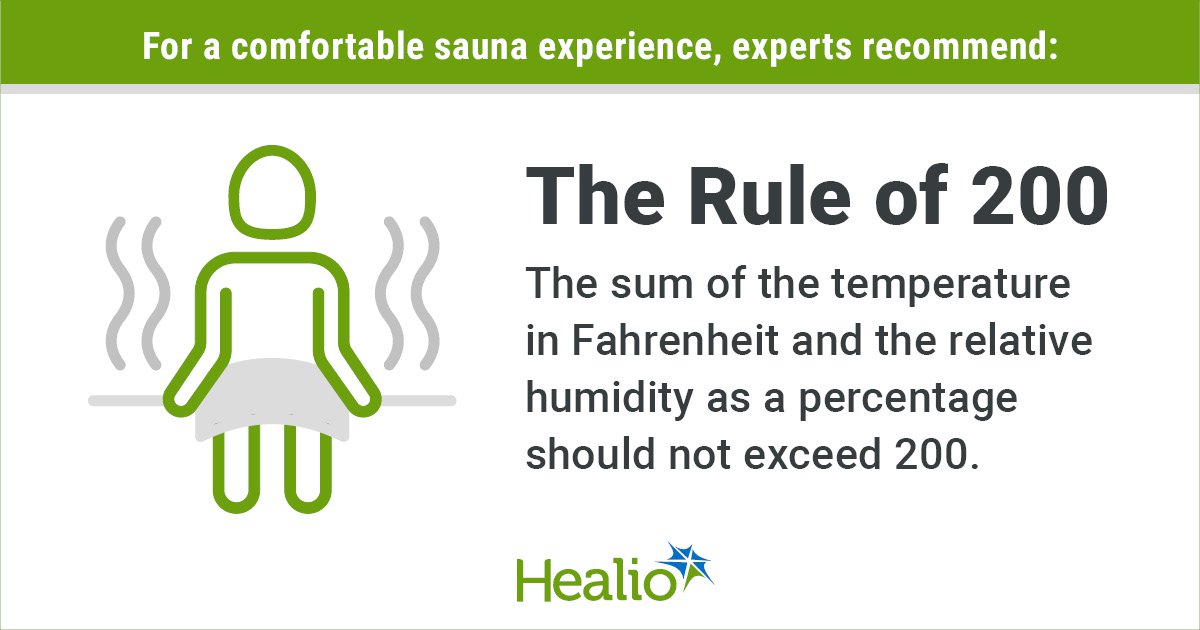August 04, 2025
4 min read
Lewiss on Lifestyle Medicine
Key takeaways:
- Thermal stress — both cold exposure and heat exposure, eg, through sauna bathing — has beneficial health outcomes.
- Data suggest that sauna bathing may help regulate blood pressure and reduce mortality.
Some of my first experiences participating in sauna bathing occurred during travels to Japan and Sweden for work.
Social connection is a key pillar of lifestyle medicine, and I witnessed how my friends visited the neighborhood bath house with dry sauna as an intentional act of social and emotional health. I observed how easy it was to integrate sauna bathing into daily or weekly life as the facilities were publicly accessible. It was also not unusual for people to have a sauna in their home. Sauna bathing was not a trend, nor a novel innovation, nor a health hack. It was simply a part of regular living and a healthy aspect of society and culture.

Back in the United States, while hiking with a friend, I had an “aha” moment that made me think more seriously about the health benefits of sauna bathing beyond social connection. We were chatting about exercise and maintaining our physical health. She shared that she went to the sauna for both physical and mental health as often as she could, even up to a few times per week. And definitely after an ambitious hike.
In truth, sweat bathing — or the practice of exposing the body to heat, typically in a structure or enclosed space to induce perspiration — holds a place in the history of many countries and cultures. “Sauna,” a Finnish word, dates back as far as 7,000 BCE.
In The Stress Paradox: Why You Need Stress to Live Longer, Healthier, and Happier, author Sharon Horesh Bergquist, MD, writes about the positive effects of hormesis, or the science and health benefits of good stress. Thermal stress — both cold exposure and heat exposure, eg, through sauna bathing — is one of those good stressors.
There are many proposed health benefits of sauna bathing. A comprehensive reference is the 2024 publication in the journal Temperature by Jari Laukkanen, MD, PhD, and Setor Kunutsor, MD, PhD. The dry heat of the Finnish style sauna is the most studied form of passive heat therapy. This is characterized by high temperatures (ranging from 80° to 100°C) and dry air with relative humidity varying from 10% to 20%. Sessions are often 15 to 20 minutes in length. In one visit, a person engages in multiple rounds, alternating with cooling periods and rest.
The sauna bathing literature covers an array of health conditions yet can be limited in depth and in the number of studies for each health-related effect or topic. The generalizability is consequently narrow in, for example, cases where researchers enrolled only men, where the report lacks long-term follow up, or where the publication date is decades old. That being said, the science is promising. Some of the reported positive health effects include improved blood pressure regulation and decreased mortality from cardiovascular causes.
One study followed 2,315 Finnish men aged 42 to 60 years for about 20 years. The researchers reported that men who sauna bathed more frequently (eg, 4 to 7 times per week) had a decrease in sudden cardiac death, fatal coronary heart disease, fatal cardiovascular disease and all-cause mortality compared with those who sauna bathed once per week.
Another study followed 1,688 participants (51.4% women) and similarly found that higher frequency and a longer duration of sauna bathing were each independently and inversely associated with fatal cardiovascular disease events.
Another study reported the results of 102 Finnish patients (56% men) for a single sauna bathing session. Each enrollee reported a baseline of at least one sauna session per week, at least one cardiovascular risk factor, no active cardiovascular symptoms and no diagnosed cardiovascular disease. The 30-minute sauna session was two 15-minute sessions at 73°C and 10% to 20% humidity, with a 2-minute warm shower in between. Sauna lowered blood pressure at the end of the 30 minutes, and this lowering persisted for 30 minutes after the session during the rest period. Another study suggested that sauna bathing can aid in the prevention of incident hypertension.
How hot and humid should a sauna bath be? Personal preference plays a role. For example, ideal sauna conditions can vary day to day for a person based upon stress, hydration and recent exercise. The general guidelines focus on providing a way for people to balance temperature and humidity without becoming overheated or uncomfortable. For example, the Rule of 200 suggests that a comfortable experience comes from the sum of the temperature in Fahrenheit and relative humidity as a percentage equaling approximately 200. This recommendation is reportedly from people within the United States sauna industry. Much of the scientific literature reports sauna temperatures in Celsius, so be sure to pay attention to the scale of the temperature recommended.
The literature reporting the health effects of sauna bathing is evolving. I personally look forward to seeing more research on the long-term effects of sauna bathing and its impact on sleep, dementia prevention, mood and musculoskeletal health.
Author’s note: This article is for educational purposes. Even as health care professionals, we should check with our physicians before engaging in sauna bathing.
References:
- Brunt VE, Minson CT. J Appl Physiol. 2021;doi:10.1152/japplphysiol.00141.2020.
- Laukkanen T, et al. BMC Med. 2018;doi:10.1186/s12916-018-1198-0.
- Laukkanen JA, Kunutsor SK. Temperature (Austin). 2024;doi:10.1080/23328940.2023.2300623.
- Laukkanen T, et al. J Hum Hypertens. 2018;doi:10.1038/s41371-017-0008-z.
- Laukkanen T, et al. JAMA Intern Med. 2015;doi:10.1001/jamainternmed.2014.8187.
- Sauna is life: Sauna culture in Finland. www.americanswedish.org/exhibitions/sauna-life-sauna-culture-finland. Accessed July 28, 2025.
- The 10,000-year-old origins of the sauna — and why it’s still going strong. https://www.bbc.com/culture/article/20231024-the-10000-year-origins-of-the-sauna-and-why-its-still-going-strong. Published Oct. 24, 2023. Accessed July 28, 2025.
- Zaccardi F, et al. Am J Hypertens. 2017;doi:10.1093/ajh/hpx102.
For more information:
Resa E. Lewiss, MD, is a lifestyle medicine and emergency medicine physician. She is an adjunct professor of emergency medicine at the Warren Alpert Medical School of Brown University. She is the host of The Visible Voices Podcast and the co-author of MicroSkills: Small Actions, Big Impact. She can be reached via her website resaelewissmd.com.









